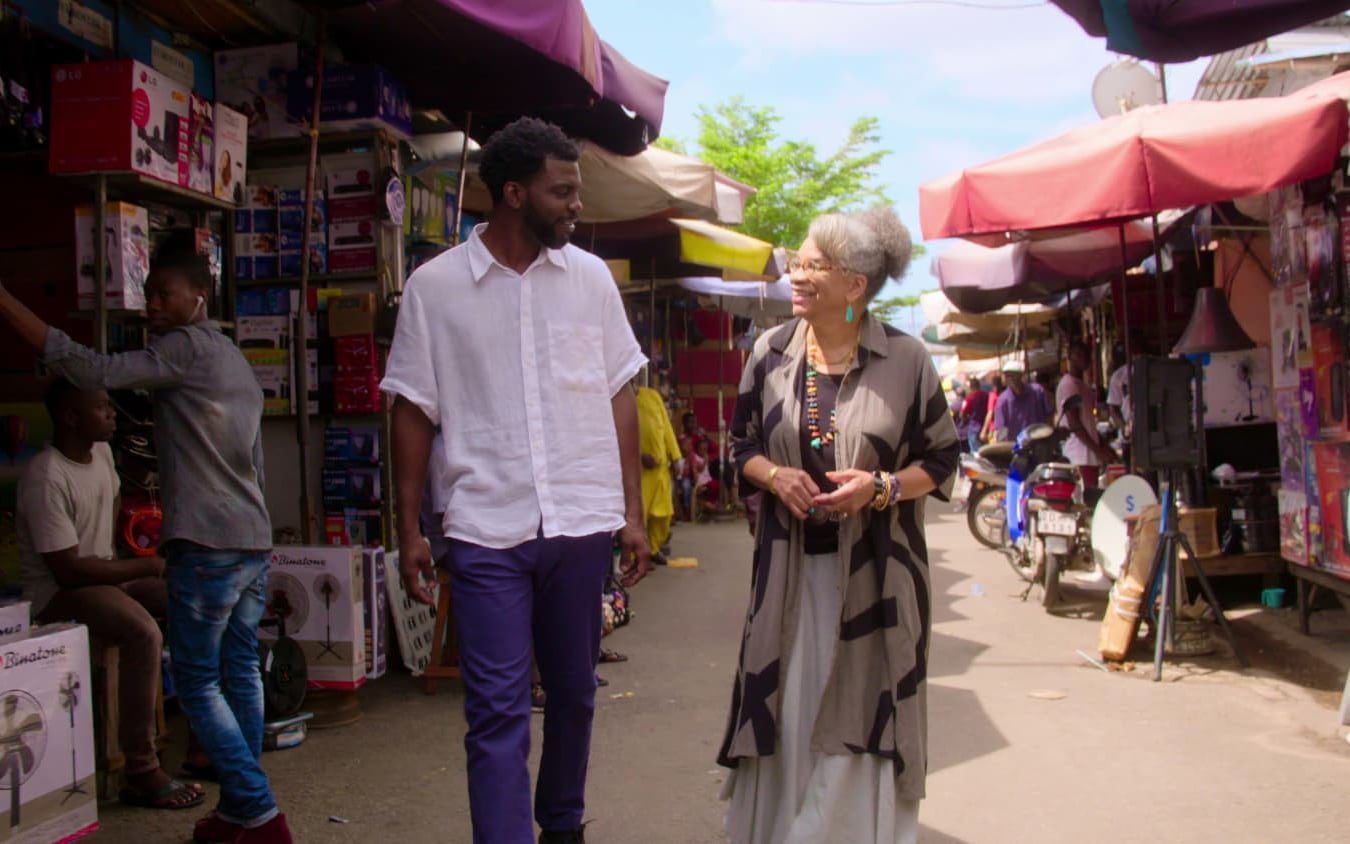Netflix’s High on the Hog: A Delightful, Sobering Look at African American History, Cuisine (Review)

Though not a “foodie” myself, I thoroughly enjoy many of Netflix’s food documentaries, such as Salt Fat Acid Heat, the various incarnations of Chef’s Table, and Street Food: Asia. Not only are they uniformly well-produced and informative, but they’re also quite palate-stimulating. And at first glance, the streaming service’s latest food documentary, High on the Hog, seems to follow the same basic formula: the audience is taken on a trip around the world, introduced to various individuals who are passionate about cooking, and of course, shown exquisitely shot footage of incredible-looking meals that are bound to get us salivating.
But High on the Hog, which was inspired by Jessica B. Harris’ acclaimed 2012 book of the same name, has a bit more on its mind, and proves to be a more sobering viewing experience as it highlights how African American cooking and culture not only survived slavery, but thrived and impacted the broader American culture. I say “sobering” because doing this topic justice necessarily involves an exploration of slavery’s legacy in America — something that’s become increasingly fraught in our current social and political climate, as people on various ends of the spectrum battle over critical race theory, police brutality, and #BlackLivesMatter.
But approaching High on the Hog with one’s “woke” detector set to high alert would be a mistake, because the series’ goal isn’t really to assign blame, cast aspersions, or point fingers at those oppressors of Black culture — however justified the series’ creators or its host, food critic Stephen Satterfield, would be in taking that particular direction.
High on the Hog is certainly not without sorrow and grimness, particularly in the first episode, as Satterfield travels to Benin, retraces the final steps of enslaved people before they were shipped off to America, and makes an emotional visit to a mass grave. As a white person, I can only imagine what it must’ve been like for Satterfield to walk down the same road that people like his ancestors were forced to march down on their way to a new world of oppression and brutality.
But what struck me during the series’ four episodes — which you can easily knock out in a weekend — is the sense of pride that both Satterfield and his various interviewees exude. It’s a pride that comes from knowing that their enslaved ancestors didn’t just survive horrific abuse but actually found the will and means to thrive and build a culture in spite of it, and pride in their own efforts to celebrate and pay respect to their ancestors by bringing that culture to modern audiences.
In some cases, this means opening high-end restaurants and hosting celebrated events where dishes that have been passed down, from generation to generation, are given a modern spin that still captures their original essence. In other cases, it means hosting a large community barbecue where every part of the hog is used and transformed into a hearty meal, or traveling to Thomas Jefferson’s Monticello for a dish of macaroni and cheese just like his enslaved chef James Hemings would’ve prepared back in the 18th century.
Throughout it all, Satterfield uncovers hidden aspects of our nation’s history. The series’ second episode discusses the prominence that rice farming had in America’s economy long before cotton became a staple of the South, and how slave owners exploited the farming expertise of enslaved Africans in order to transform the Southern landscape. In the series’ fourth episode, Satterfield travels to Texas to hang out with Black cowboys, and we learn that not only were the formerly enslaved some of the nation’s first cowboys, they also played a role in shaping both the rodeo and Texas BBQ.
Naturally, High on the Hog wouldn’t be a Netflix food documentary if it wasn’t packed with shots of tantalizing and mouth-watering dishes, some of which can be seen in the trailer below. Picture-perfect brisket and ribs, gorgeous-looking red velvet cake and apple pie, oysters, a Virginia ham, an open-air banquet replete with collard greens and plum wine, classic baked macaroni and cheese — all these and more are paraded in front of the viewer, a veritable cornucopia that had my family eager to find some way to experience them for ourselves.
It may be impossible to fully divorce High on the Hog from the current cultural climate. (Indeed, it might have been a canny move on Netflix’s part to release the series when they did.) But I don’t think we should try, anyway. As one of Satterfield’s interviewees — who happens to be one of Thomas Jefferson’s descendants — points out, the tenacity, courage, and resilience of African Americans and their enslaved ancestors represents the best of America, and what America claims to represent.
Ultimately, what I’m left with after watching High on the Hog — aside from a deep, abiding need to get some of that BBQ, that is — is the notion that simply recognizing and owning up to America’s slavery-infested history is not enough (and Lord knows, we still have a ways to go on that). We also need to recognize that much of what we consider to be quintessentially “American” — e.g., macaroni and cheese, Texas BBQ — is invariably linked to, and shaped by, the Black experience. Recognizing and owning up to this need not solely be a sorrowful task of guilt and abnegation, however. It can also be a celebration, or as High on the Hog shows us time and again, a feast.
